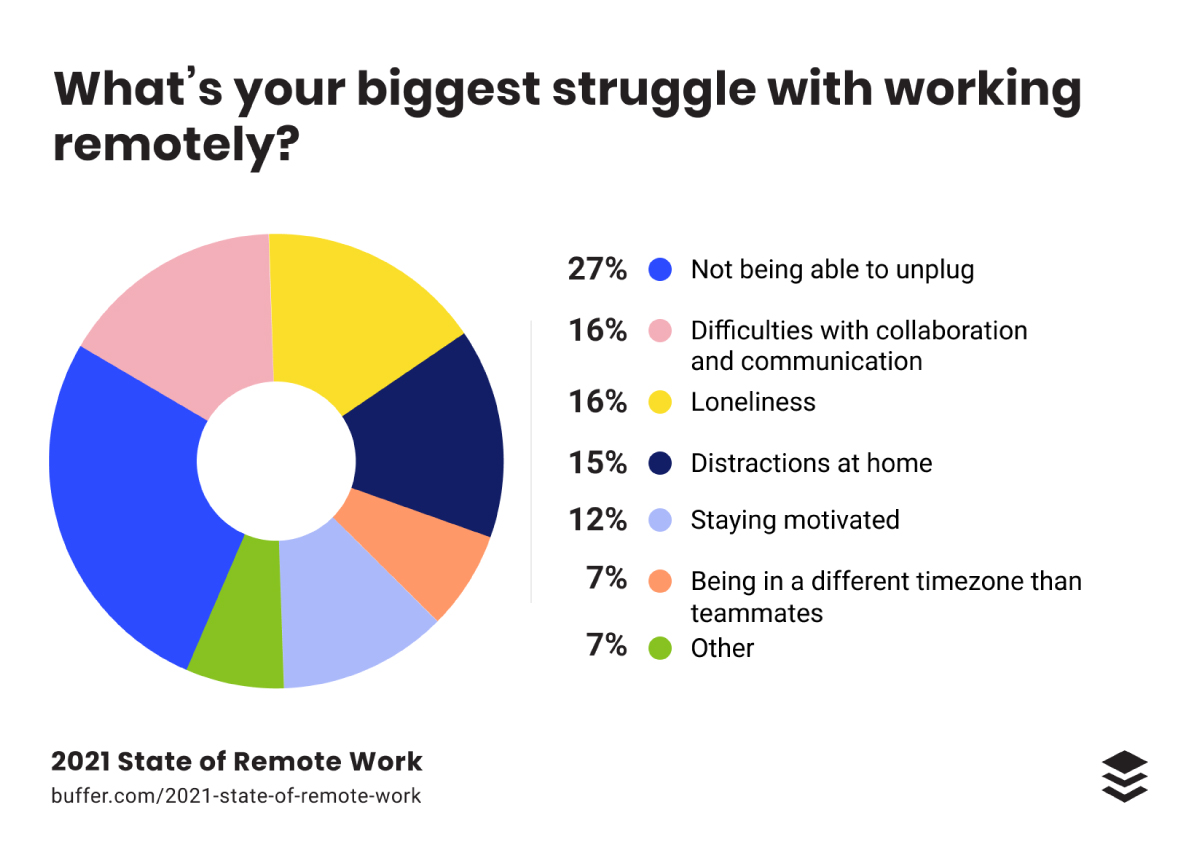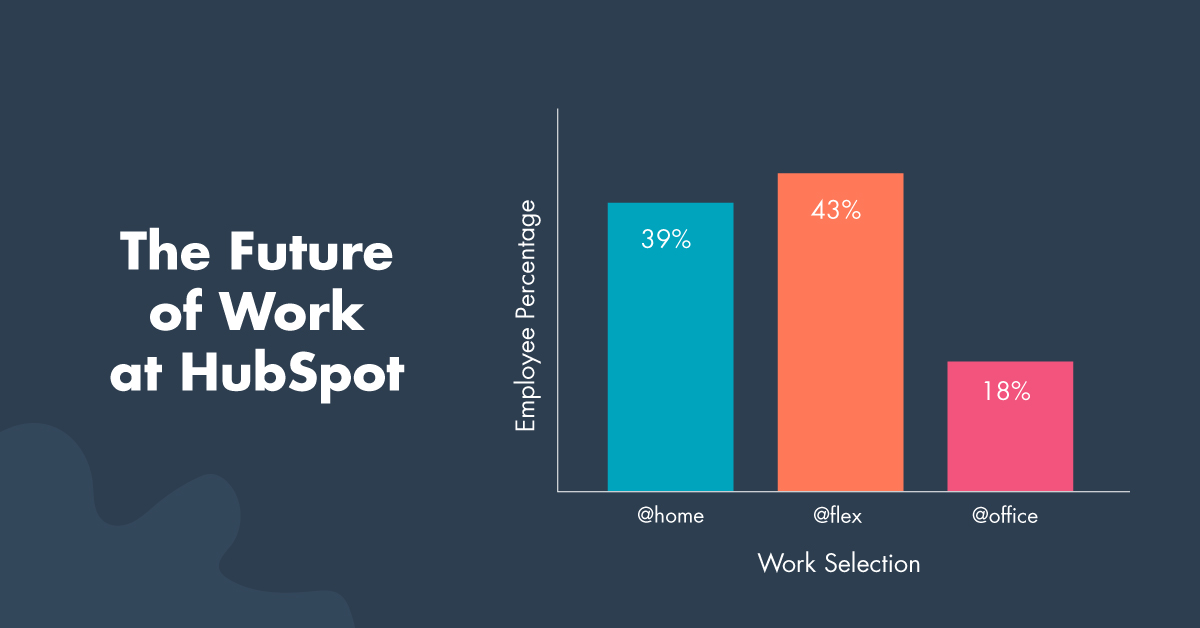The COVID-19 pandemic caused a dynamic shift in the world of work. Just over a year ago, people were sitting in their offices and tapping away at their keyboards while silently cursing their loud and obnoxious coworkers. That’s all changed.
As a result of the global pandemic, businesses everywhere were forced to adapt to online work environments as the threat of transmission rendered office work impossible. Where working from home was once a perk for employees, it’s become the new normal.
One ETR study found that the percentage of employees working from home was set to double in 2021. Another study by Gartner found that 74% of businesses plan to permanently shift to remote work after the crisis ends. However, remote working is a controversial subject and not everyone is thrilled with the idea of working from home (even if it does mean they can work in their pajamas!)
In this article, we’ll discuss all things remote work. We’ll take a look at the current trends shaping remote work and whether or not it’s here to stay.
The current state of remote work
In 2020, most people waved goodbye to their morning commute and began setting up their home office. As we move further into 2021, employers and employees are wondering what the future holds for remote work.
Although the pandemic has been a catalyst for remote work policy adoption, flexible working arrangements have long been in high demand. Since 2015, the number of people working from home has risen by over 140%. Before the crisis struck, 80% of employees wanted to work from home at least partially.
Employees want the freedom and flexibility to work from anywhere, in fact, 97.6% of people surveyed in the Buffer State of Remote Work Report agreed that they would like to work remotely (at least some of the time) for the rest of their career and 97% would recommend it to others.
When the pandemic hit, employees across industries were suddenly forced to work remotely. People created makeshift offices and found themselves trying to juggle work, kids, and personal lives while confined to their homes. Some people embraced it, while others realized that working remotely isn’t always as straightforward as it seems.
Remote working pros & cons: The good, the bad, and the cats
Even though remote working brings with it some life-changing advantages, it’s not without its challenges!
Remote work advantages
1. Flexibility
Being able to enjoy a more flexible schedule was the main benefit (32%) of remote work as reported by participants in the Buffer State of Work Report. Employees can plan their schedules to suit their needs, enabling them to better manage work around other life commitments.
The same study reported the second biggest benefit of remote work to be the flexibility to work from anywhere (25%). No longer being tied to a physical office environment allows employees to live and work where they please. Offering employees this kind of flexibility and freedom builds better employee relationships, leading to improved job satisfaction.
2. It saves money
Another main advantage of remote work is that it’s cost-effective for employees and employers. Telecommuting reduces or eliminates the cost of commuting for employees and has been found to save upwards of $5000 per year.
Depending on the location, working in an office often means more than an hour of commuting per day. This results in a lot of time, energy, and money that employees could be spending elsewhere. Not to mention the benefits for the environment!
Companies that go fully or partially remote can save money on things like:
- Office space
- Hardware equipment
- Electricity
- Parking
- Travel reimbursements
If companies allow employees to work remotely just half of the time, they’re likely to save, on average, $11,000 annually.
3. Improved productivity
According to a Hubspot report, 60% of employees agree that remote working allows them to bring their best selves to work.
Working remotely allows employees to avoid office distractions like time-consuming meetings, unnecessary phone calls, and interruptions from colleagues. In fact, 77% of telecommuters report being more productive, and 76% claim that this is a direct result of experiencing fewer distractions.
However, this can also go the other way. Working from home brings its own set of unique distractions including kids, household chores, and even pets. Despite this, 85% of businesses confirm that remote working policies have increased their overall productivity.
4. Better work-life balance
One of the biggest benefits of remote working is that it improves work/life balance. Working away from the office provides employees with more control over their life. They can balance work and home tasks around each other, allowing them more time to spend with their family or doing the things they love.

Remote work challenges
1. Communication and collaboration difficulties
Buffer’s report found that collaboration and communication were some of the biggest struggles for remote workers.
This Hubspot report found that 39% of respondents agreed their company could have made the transition to remote work smoother with better collaboration and communication tools. Remote teams are dependent on technology to work together, and not being able to meet face-to-face can make this more challenging.
The same report found that 43% had a harder time participating in meetings when everyone is remote, and 29% agreed it’s harder to give and receive feedback virtually.
2. Lack of workplace culture and feelings of isolation
More than half of employees report feeling disconnected from in-office employees if they work remotely. Moreover, 32% of remote workers agreed that they don’t feel part of their company’s culture.
Not being able to meet and socialize with colleagues in person can be a challenge of working remotely, and can lead to feelings of loneliness and isolation. In fact, 16% of remote workers reported that overcoming feelings of loneliness was the biggest struggle of working remotely.
All of this being said, 59% of respondents in the Hubspot 2020 Remote Work Report agreed that their company actively works to create an inclusive environment for remote workers. As remote working becomes increasingly common, we’re likely to see companies making more of an effort to facilitate an online workplace culture using communication and collaboration tools and holding regular virtual team-building activities.
3. Difficulty switching off
Although a better work/life balance is a benefit of remote working for many employees, it can be a challenge for many. 27% of remote workers reported their biggest struggle to be not being able to unplug.
Employees might also have been forced to take on other roles during the pandemic, with 73% taking on full-time childcare or caregiving responsibilities at home. Remote working in these situations further blurs the boundaries between work/personal lives, especially for those who choose to work from home, or have no other option.

What does the future of remote work look like?
As the world looks towards a post-pandemic future, there is one question company employees everywhere are asking: Is remote working here to stay?
The answer is, undoubtedly, yes.
Companies will likely reform their flexible working policies to allow employees to work completely or partially remotely. Buffer’s report found that 46% of companies plan on permanently allowing remote work, with tech companies like Twitter leading the way.
Many organizations are issuing a hybrid remote working model that will allow them to benefit from the flexibility and increased productivity of remote work while facilitating the workplace culture employees crave. With 74% of employees agreeing that having the option to work remotely would make them less likely to leave their company—organizations are realizing it’s time to give the people what they want!
Everyone’s favorite inbound marketing expert Hubspot is one such company implementing a hybrid remote work policy.
Case study: The Hubspot Remote Working Model
Hubspot has decided to continue to embrace remote work, allowing their employees to choose how they work. The Hubspot Remote Working Model offers employees three options:
- @office: Employees come into a HubSpot office three or more times a week. They’ll have access to a dedicated workspace and hardware and can take their laptops home to work if they want to.
- @flex: The best of both worlds. The employee comes into the office two or fewer days a week. They’ll get a “hotel desk”, which isn’t dedicated to them. However, Hubspot will help them with a work-from-home set-up.
- @home: The employee works from home the majority of the time. They’ll get a safe work-from-home set-up that equips them with all the tools they need to do their job.
The purpose of this model is to allow employees to choose the set-up that best reflects how they work. By empowering their employees with the ability to choose, Hubspot is guaranteed to achieve better results with more productive and satisfied employees.

Remote work trends to look out for
Some remote working trends we’re likely to see emerging in 2021 and beyond include:
- High demand for advanced telecommunications solutions: As the remote workforce grows, businesses must equip employees with the platforms and tools they need to effectively work remotely (incl. Video conferencing, team collaboration apps, task management tools, etc).
- More focus on upskilling: Remote work opens up the pool for potential employees and employers, so we’re likely to experience increased focus on upskilling and reskilling within organizations.
- Human-oriented workplace culture: As company values shift in response to remote work trends, we’re likely to see a more human-oriented workplace focused on employee engagement and satisfaction.
Because employees have come to expect remote work opportunities, this trend is unlikely to die out soon. The lifestyle, financial, and productivity benefits remote work offers are too significant to ignore. Because of this, future employees are more likely to refuse a fully onsite position and companies will miss out on a huge pool of talent more willing to accept a flexible position elsewhere.
Organizations must embrace remote work, implementing remote work policies to improve business operations and enhance employee performance. As long as employers and employees do their part, there’s no reason that remote teams can’t be just as successful, if not more so, than teams that go back to the office.
Final thoughts
The COVID-19 pandemic has prematurely catapulted businesses towards remote work. Whether the future of your company is fully remote, in-the-office, or a hybrid model like Hubspot’s—now’s the time to reassess outdated organizational policies in response to remote working initiatives.
Want to learn more about how remote working can impact your business? Book a free consultation and let’s chat!

